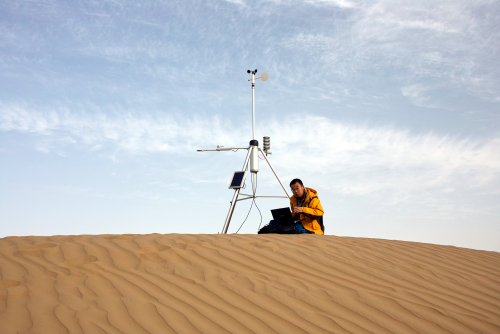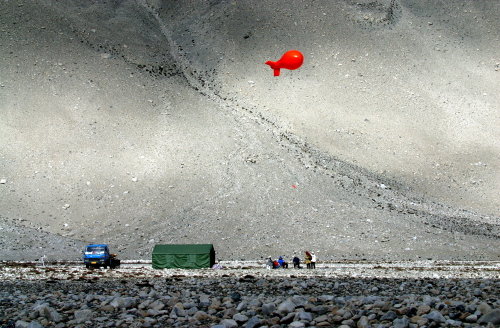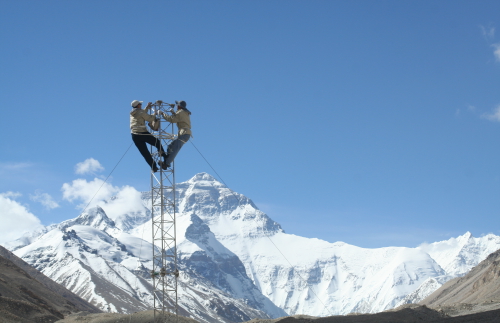Department of Lower Atmosphere Observation and Research
Department of Lower Atmosphere Observation and Research (LAOR) is composed of scientists and engineers experienced in atmospheric observation and related research. The department is equipped with advanced observation instruments, including a 325 m boundary layer tower in Beijing, a 102 m tower in Xianghe, suburban Beijing, a wind lidar, temperature–humidity lidar, GPS ozonesonde systems, unmanned planes, automatic weather stations, eddy covariance systems, a low-speed wind tunnel, and fieldwork equipment.
With these facilities, the department operates long-term observations of lower-atmosphere profiles in Beijing, from the surface to 5 km aloft, with the surface system, 325 m tower and lidar, and has accumulated data for urban boundary layer studies since the 1970s. The department has conducted a series of field operations in different regions, such as the Arctic Ocean, Antarctic, Tibetan Plateau, West Pacific, and South China Sea. In addition, the department runs a cross-disciplinary research center with the Civil Aviation Administration of PRC (CAAC) for civil aviation meteorology.
Research themes
Recent observations and research activities of the department have focused on the following areas:
1. Polar atmospheric processes;
2. Tibetan Plateau atmospheric processes;
3. Taklimakan Desert boundary layer processes;
4. The urban boundary layer in Beijing;
5. Airport meteorological services in mountain regions.

Research examples
1. Ozone variation over the Tibetan Plateau and polar regions
Based on satellite observations, a low ozone region has been revealed over the Tibetan Plateau, attributable to the atmospheric circulations driven by the plateau thermal effect. The upward air motion in the troposphere collects the poor ozone air at low altitude from neighboring regions and extrudes rich ozone air out at high altitude from the plateau region. In addition, the impacts of atmospheric circulation on the ozone variations in the polar region have been analyzed. The upward air motion caused by high SST builds an ozone low in the Scandinavia region, and climate signals like the QBO, ENSO, AO etc. can be found in the ozone variations over the Tibetan Plateau and polar region.

2. Atmospheric boundary layer over complex surfaces
Using field observations, the atmospheric boundary layer and land–air energy/mass exchange have been studied over the Himalaya, Arctic Ocean and Taklimakan Desert, amongst other regions. Substantial impacts of the local circulation on the land–air exchange in the Himalaya have been revealed; a predominance of latent heat flux in the turbulent heat transfer in the eastern Himalaya has been identified; and strong temperature inversion via warm advection has been described.
3. Development of atmospheric observation instruments
An ultrasonic turbulence observation unit named UAT2 has been developed by the department, with a 100 Hz observational frequency, and several models of unmanned observation planes have been developed and applied in various projects. Furthermore, a 325 m observation tower and 102 m tower have been built, and on-board observation systems have been upgraded several times.

Director: ZHOU Libo
Deputy Director: LI Peng
Contact: ZHU Jinhuan
Email:zhujinhuan@mail.iap.ac.cn
